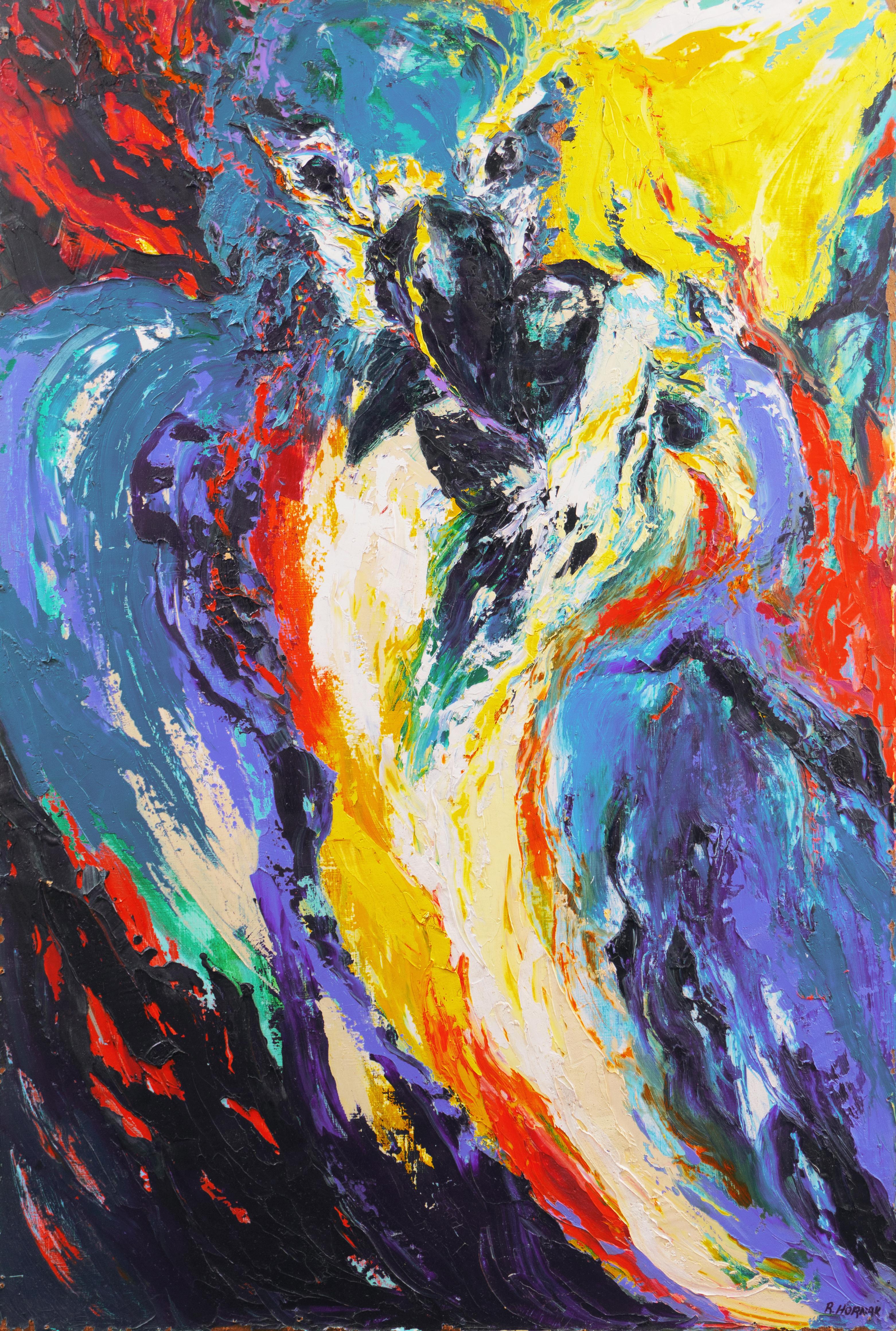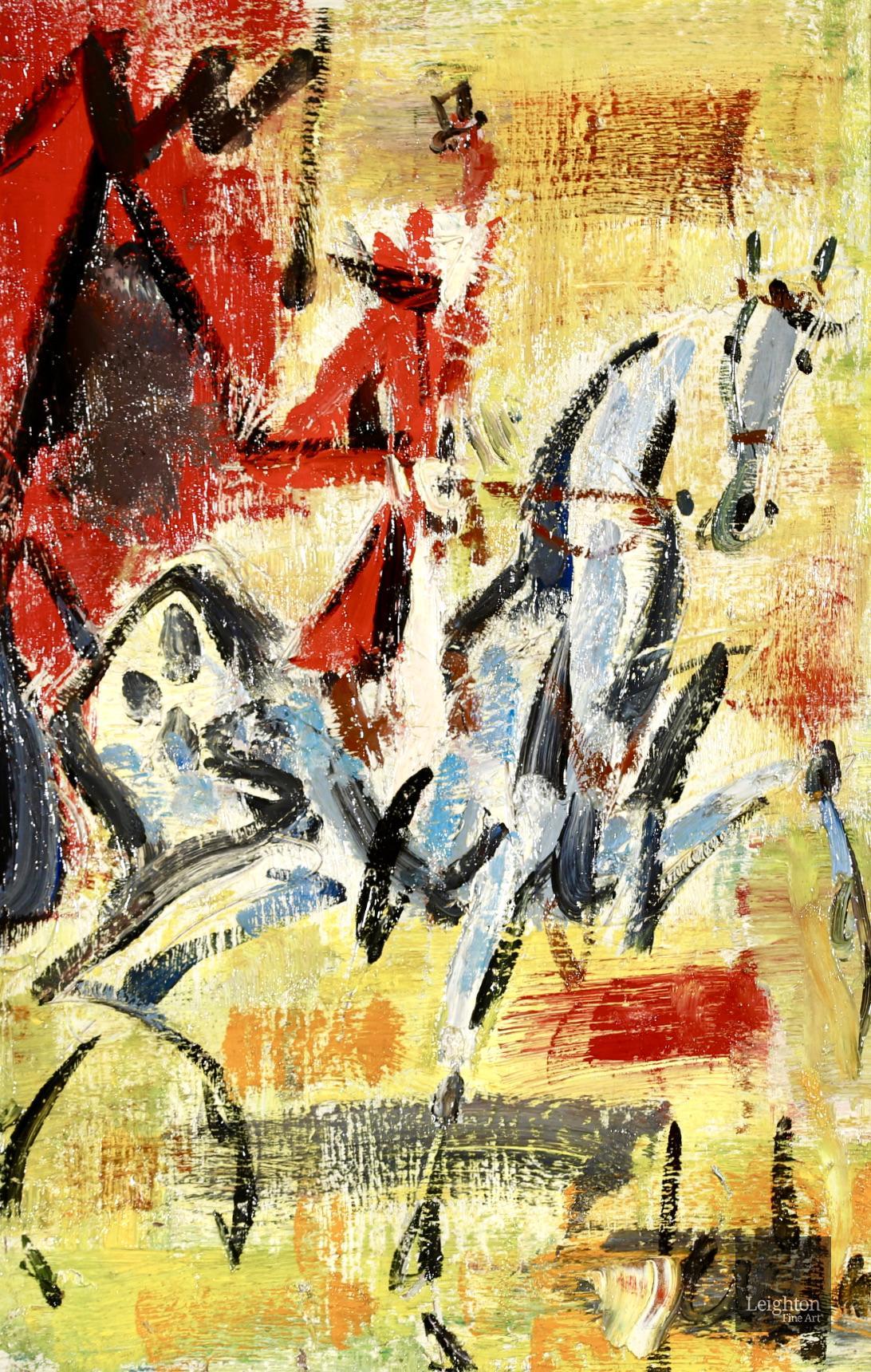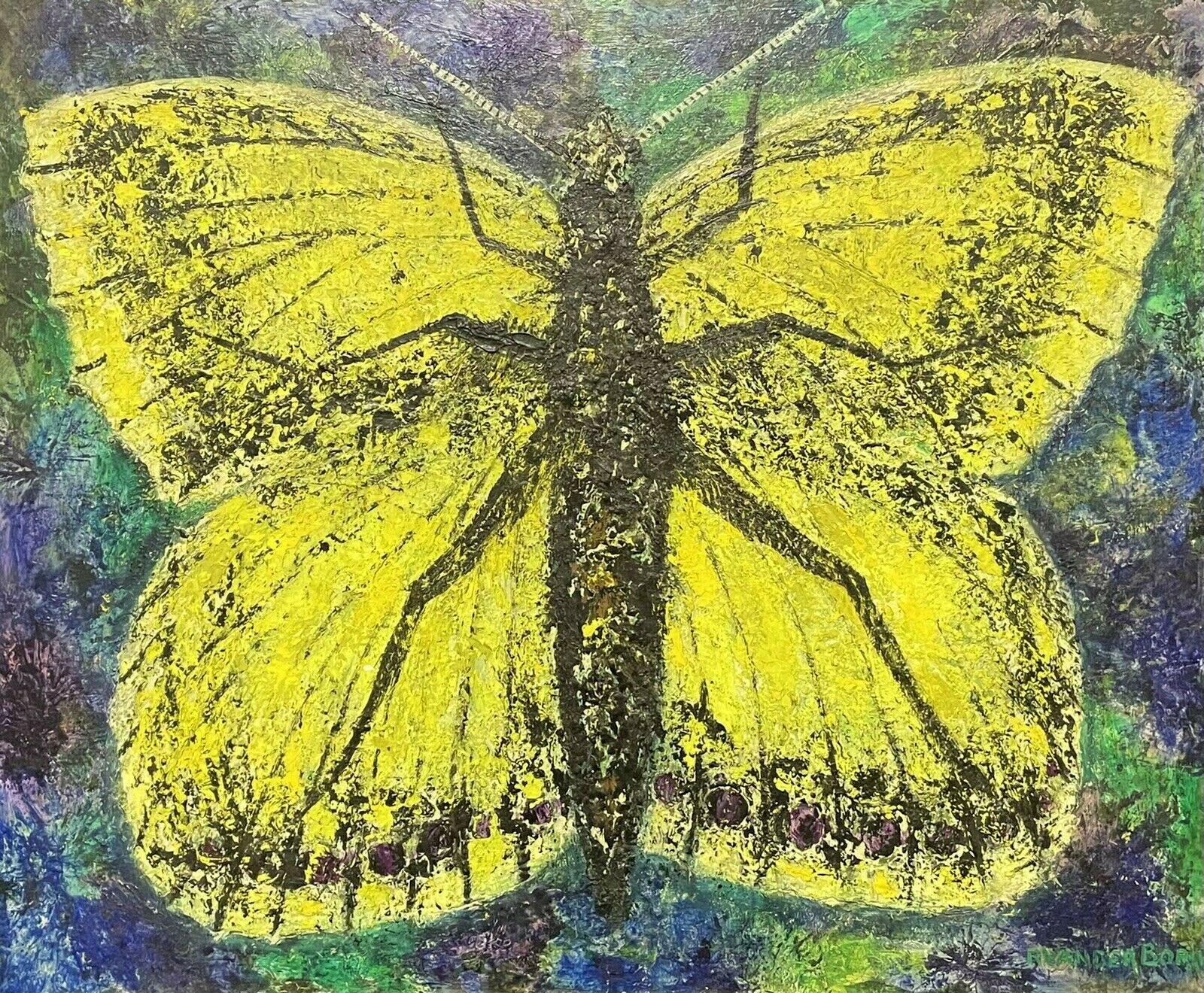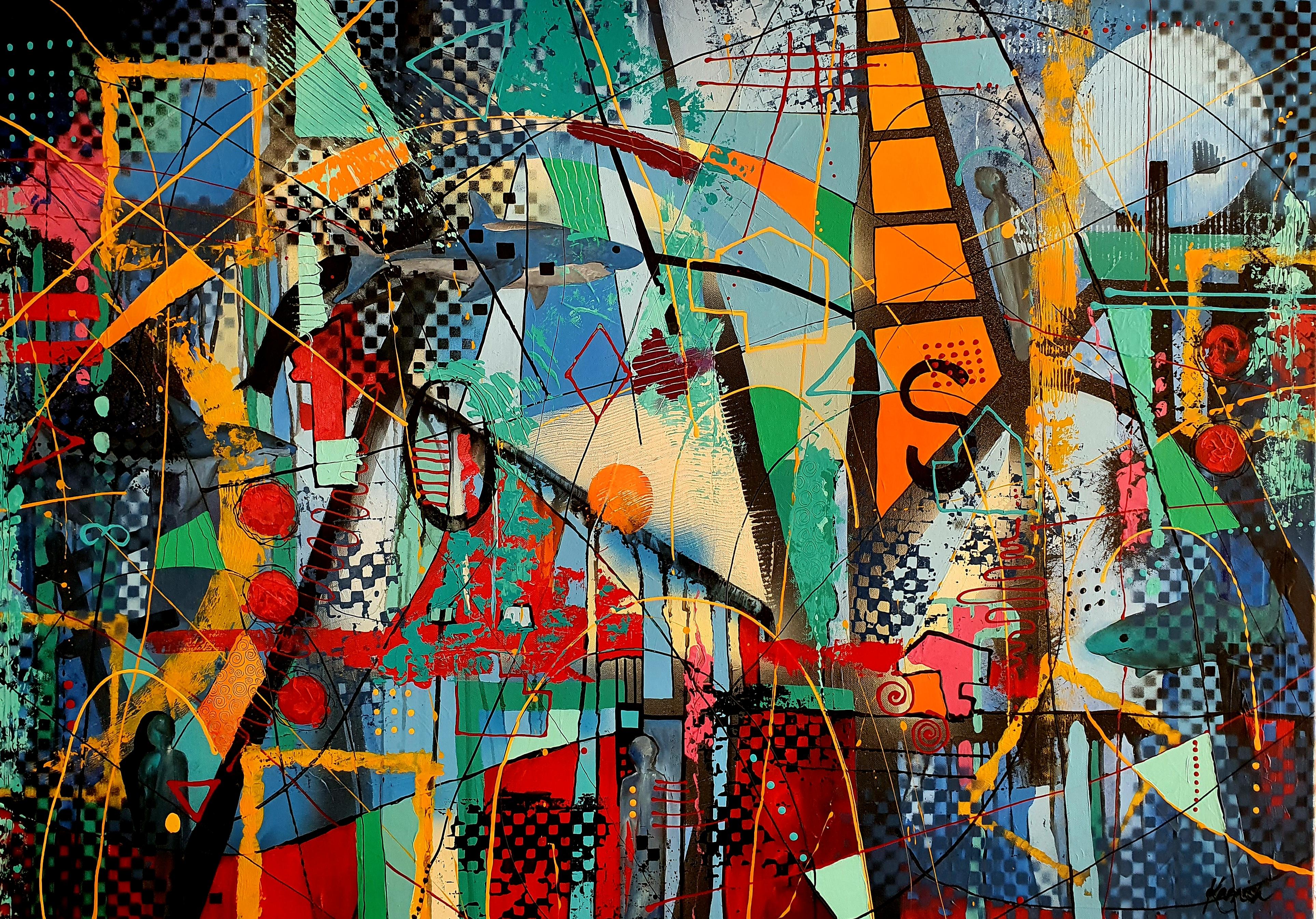Items Similar to 21st C., Expressionism, Animal Painting, Auzoux's Troglodyte Gorillas
Want more images or videos?
Request additional images or videos from the seller
1 of 9
21st C., Expressionism, Animal Painting, Auzoux's Troglodyte Gorillas2014
2014
About the Item
Around the middle of the 19th century, the missionary Thomas Savage and the anatomist Jeffries Wyman, described a new animal species – the Troglodytes Gorilla – in their article for the Journal of the Boston Society for Natural History. The French naturalist and anatomical model maker, Dr Louis Auzoux, was eager to dissect and research that gorilla and made this known to the French emperor, Napoléon III. The latter arranged for a specimen, preserved in alcohol, to be transferred from Gabon to France in 1863. Auzoux carried out the dissection in the amphitheatre of the Ecole de Médecine in Paris, in the presence of the emperor and his entourage. Later, Auzoux made a three-dimensional didactic model of the gorilla, using paper, clay and cork. The model was what is called an ‘anatomic plastique. This means that it was made to be disassembled into different parts like a real dissection. It was a useful aid for university professors and students. Dominique Yee (b. 1960), a Flemish painter with Chinese roots, was inspired by Auzoux’s model of the Troglodytes Gorilla and made four acrylic paintings of it. She focused on the face of the gorilla and tried to catch the expression of the animal in broad, accurate brushstrokes. The attractiveness of her work lies in the directness.
- Attributed to:Dominique Yee (1960, Belgian)
- Creation Year:2014
- Dimensions:Height: 47.25 in (120 cm)Width: 47.25 in (120 cm)
- Medium:
- Movement & Style:
- Period:
- Condition:
- Gallery Location:brussel, BE
- Reference Number:
About the Seller
5.0
Vetted Seller
These experienced sellers undergo a comprehensive evaluation by our team of in-house experts.
1stDibs seller since 2021
13 sales on 1stDibs
- ShippingRetrieving quote...Ships From: brussel, Belgium
- Return PolicyA return for this item may be initiated within 3 days of delivery.
More From This SellerView All
- Expressionism, Animal Painting, Auzoux's Troglodytes Gorilla's, Oil on Canvas.Located in brussel, BEAround the middle of the 19th century, the missionary Thomas Savage and the anatomist Jeffries Wyman described a new animal species – the Troglodytes Gorilla – in their Boston Societ...Category
21st Century and Contemporary Expressionist Animal Paintings
MaterialsCanvas, Oil
- 21st C., Expressionism, Animal Painting, Auzoux's Troglodytes GorillasLocated in brussel, BEAround the middle of the 19th century, the missionary Thomas Savage and the anatomist Jeffries Wyman, described a new animal species – the Troglodytes Gorilla – in their article for ...Category
2010s Expressionist Animal Paintings
MaterialsOil
- 17th C, Baroque, Hunting Scene, Wild Boar Hunt in the style of Frans SnijdersLocated in brussel, BEHunting played an essential role in the lives of princes and nobles for centuries. It was no different in the 17th century. Paintings depicting hunting scenes were hung, for example, in the hunting lodges of elites. It should be noted that the upper bourgeoisie also began to show interest in painted hunting scenes during the 17th century. In the Southern Netherlands there were a number of skilled animal painters who produced hunting scenes, including Frans Snijders, Paul De Vos, Jan Roos, Pieter Boel and Jan Fyt. Snijders knew how to render the anatomy of the animals masterfully. Also, he managed to make his animals look intelligent. He let them express a variety of feelings. His colleague, Paul De Vos, seems to have been less familiar with animal anatomy. His animals lack a kind of individuality and psychological expression. The panel shows a boar hunt with dogs. It was a prevalent theme, portrayed by Rubens, Snijders, De Vos and others. Buyers were especially interested in the showdown between animal species. The mental and physical strength appealed to their imagination. The painter of this little work has no solid knowledge of dog breeds. Due to a lack of insight into dogs' bone and muscle structure, he makes them look rather stiff. Mainly the heads have something naïve about them. It cannot be ruled out that the artist of this painting is Jan van Kessel...Category
17th Century Baroque Landscape Paintings
MaterialsCanvas, Oak, Oil
- 19th C, Romanticism, Genre Painting, SheepstableLocated in brussel, BEPieter Plas placed himself with this pastoral scene in the tradition of the 17th-century painters and draughtsmen such as Nicolaes Pietersz Berchem, Karel du Jardin, Marcus de Bye an...Category
19th Century Romantic Figurative Paintings
MaterialsOil
- 21st C., Expressionism, Animal Painting, Auzoux's Troglodytes Gorilla'sLocated in brussel, BEAround the middle of the 19th century, the missionary Thomas Savage and the anatomist Jeffries Wyman described a new animal species – the Troglodytes Gorilla – in their article for t...Category
21st Century and Contemporary Expressionist Abstract Paintings
MaterialsOil
- 16th C, Biblical, Manner of Joos van Cleve, Madonna with Child, Oil on PanelBy Joos van CleveLocated in brussel, BEAttentive observer, may I challenge you to find some unusual elements in this panel painting? One detail has to do with the symbolic use of color, the other with a later adjustment of the image. Indeed! The Blessed Virgin is not dressed in her usual sky blue cloak, which refers to her purity, but in a red robe. During the Late Middle Ages and early Renaissance, the Virgin often wore such a red garment to refer to the Passion of Christ. After all, the blessing Christ child with his orb would shed his blood for the redemption of mankind. The second strange element catches the eye when one looks closer at the little Jesus. It appears that he was originally depicted completely naked, but got on a transparent loincloth over time. In the past there were several times when nudity in art was subject to some form of censorship. For example, the supervision of Christian art was strongly encouraged by the Council of Trent (1545-1563). This assembly was dealing with the inner-ecclesiastical reform of the Roman Catholic Church. One of the important theologians who followed the council’s guidelines was Joannes Molanus (1533-1585). He did not consider the nakedness of the Christ Child to be edifying and pointed out that children could be endangered in this way. He may have been referring to the dangers of paedophilia. During the 19th century, puritanism emerged. A famous example of a moral preacher was Pope Pius IX...Category
16th Century Baroque Figurative Paintings
MaterialsCanvas, Oil
You May Also Like
- 'Pair of Perroquets', Large, Expressionist Oil, Parrots, Detroit Woman artistLocated in Santa Cruz, CASigned lower right, 'R. Hornak' for Rosemary Hornak (American, born 1951); additionally signed verso, titled 'Perroquets Impasto, Variation 2' and dated 1992. Rosemary Hornak received her Bachelor in Fine Arts from the College for Creative Studies in Detroit in 1978. She is the recipient of numerous prizes and juried awards and has exhibited widely and with success, both at solo and group exhibitions including at Swann Galleries in Detroit and at the Macomb Center. Raised in an artistic family, Rosemary Hornak is the sister of the hyper-realist painter, Ian Hornak. Selected Solo Exhibitions: 2004 Eric I. Spoutz Gallery, Fisher Building...Category
1990s Expressionist Animal Paintings
MaterialsMasonite, Oil
- Horse & Rider - Expressionist Portrait Oil Painting by Gen PaulBy Gen PaulLocated in Marlow, BuckinghamshireSigned expressionist oil on board portrait circa 1950 by French painter and engraver Gen Paul. This charming work depicts a jockey wearing red jacket and breeches seated on a white horse. This work is likely a painting of the fictional character Don Quixote from the novel by Miguel De Cervantes. Paul painted this subject on numerous occasions. Signature: Signed lower right Dimensiosn: Framed: 26.5"x21.5" Unframed: 16"x11" Provenance: Private French collection of the work of Gen Paul Gen-Paul was born in the Rue Lepic, at the heart of Montmartre. His mother was an embroiderer, and his father was a café musician. Gen-Paul began painting from a young age. An apprentice interior decorative artist, he looked about him in the wealthy apartments where his work took him and observed the pieces collected by art lovers, and he learned anatomy by getting to know surgeons and going with them into operating theatres. He also attended the École des Beaux-Arts. He painted on discarded cigar boxes using coloured supplements from L'Illustration as models. This was in 1913. At the outbreak of World War I he volunteered for service and was wounded; a year later a second wound led to the amputation of his right leg. Back in Paris in 1916, he began to paint. His first oil painting, the Moulin de la Galette seen from his window, dates from 1916. His early works are not easy to identify, as he painted many views of Paris to satisfy customers who wanted a painting 'in the style of so-and-so'. In 1918 he first signed a canvas Gen-Paul. In 1920 he showed work at the Salon d'Automne, remaining faithful to this institution and to the Salon des Indépendants. His first solo show took place in the Galerie Bing in 1926. He illustrated several of Céline's books, including Journey to the End of Night, Death on Tick ( Voyage au bout de la nuit, Mort à crédit) in 1942. He also produced engravings, some of which were published as a collection entitled Views of Montmartre ( Les vues de Montmartre). When World War II ended he travelled frequently to the USA and New York. In 1952 the Galerie Drouant-David in Paris put on a retrospective dedicated to him. Gen-Paul did not exhibit much, had no dealer, and travelled frequently in France and Spain. Posthumous collective exhibitions include: Galerie Roussard...Category
1950s Expressionist Abstract Paintings
MaterialsBoard, Oil
- Mid 20th Century oil painting of a cicada by Belgian artist BaugnietLocated in Petworth, West SussexMarcel Louis Baugniet (Belgian, 1896 – 1995) Sigale de Mer (Cicada of the sea) Oil on board with scraffito Signed ‘M L BAUGNIET / 47’ (upper right) 17.3/4 x 13.1/2 in. (45 x 34.3 cm.) Marcel-Louis Baugniet was born in Liege on the 18th March 1896. Painter, theorist, furniture designer, creator of posters, costumes and stage sets, he was one of the main defenders of the notion of Pure Plastic Arts. Baugniet studied painting at the Royal Academy of Beaux-Arts in Brussels where he mixed with Paul Delvaux, René Magritte, Victor Servrancks and Pierre-Louis Flouquet. He spent some time in Paris and decided that he would become an iconoclastic and avant garde artist. He discovered abstract art with Kandinsky, Kupka, Mondrian and Delaunay and with wonder and stupeur he also learnt of the constructivist movement, which was born in Russia with Malevitch and Lissitsky. In 1922, Baugniet then 26 years old returned to Brussels and married the Russian danser Akarova for whom he designed costumes and stage sets. M-L Baugniet painted, designed and engraved some superb series of dansers and sportspersons (the « Kaloprosopies »), works entrenched with impeccable lines of constructed art. He painted with contemplation geometric compositions which mixed a grace of colours with the rigour of shapes. Baugniet wrote articles on esthetics and applicated arts in the magasine 7 Arts and edited, with the Dutch architect Van Tonderen, the manifesto of the movement that they called « Le beau, C’est l'utile » (beauty is useful) Towards the end of the 20s, he separated from Akarova and in 1927 he opened his own Home Decor shop. With regret Baugniet laid down his paint brushes and threw himself into interior design and the creation of tubular furniture, everyday objects and carpets. He remarried the Russian Olga Reich. He created a circle of ideas that included artists, writers, politicians and intellectuals of all kinds. Throughout his career, Baugniet participated in numerous international exhibitions of decorative art. In 1977 abstraction, constructivism and Marcel-Louis Baugniet were rediscovered. Decorated and lauded, Baugniet began to paint once more and co-founded the magasine Mesures with Jo Delahaut...Category
Mid-20th Century Expressionist Animal Paintings
MaterialsOil, Board
- STUNNING 1970'S FRENCH EXPRESSIONIST SIGNED OIL - GIANT BUTTERFLY/ MOTH PAINTINGLocated in Cirencester, GloucestershireArtist/ School: French School, indistinctly signed lower right, circa 1970's Title: Giant Butterfly/ Moth Medium: oil painting, on board. Size: frame: 24.25 x 29.25 inches...Category
Mid-20th Century Expressionist Abstract Paintings
MaterialsOil
- The Guardians of Poseidon - Blue Moon. Expressionist artwork Sharks Blue SoulfulBy Karnish ArtLocated in Cullinan, ZATitle: The Guardians of Poseidon - Blue Moon Soulful artwork of sharks, symbols and forms, with the Blue Moon and rays of Light overlooking the play. Graffiti, spray-paint, acrylics...Category
2010s Expressionist Abstract Paintings
MaterialsAcrylic
- "Found Fat" (Abstract, Neutral, Skull, Bold, Graphic, Type, Text, Red, Green)By Nicholas EvansLocated in Paris, IDFFOUND FAT 2020 Paris, France Bold, hand-painted, serif typography, painted over a lion's skull on a stained, gessoed canvas. The words read: "Found Fat," mirrored in a vivid green ...Category
21st Century and Contemporary Abstract Abstract Paintings
MaterialsCanvas, Oil, Acrylic, Graphite
Recently Viewed
View AllMore Ways To Browse
Emperor Painting
Paintings Of Napoleon
Specimen Painting
Used Anatomical Models
French Naturalist
Alcohol Painting
Napoleon Oil Painting
Abstract Expressionism Facer
French Napoleon Iii Painting
19th Century Flemish Oil Painting
Gorilla Gorilla
Naturalist Oil Paintings
Gorilla Art
Flemish Animals
Gorilla Painting
Dr Auzoux
Napoleon B Art
Chinese Cork Art





